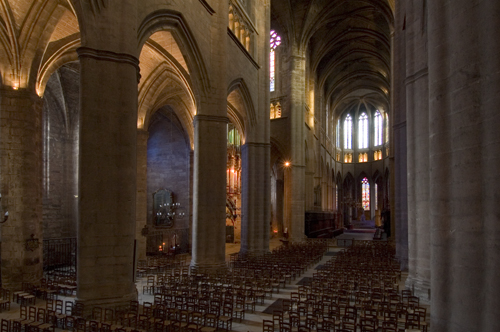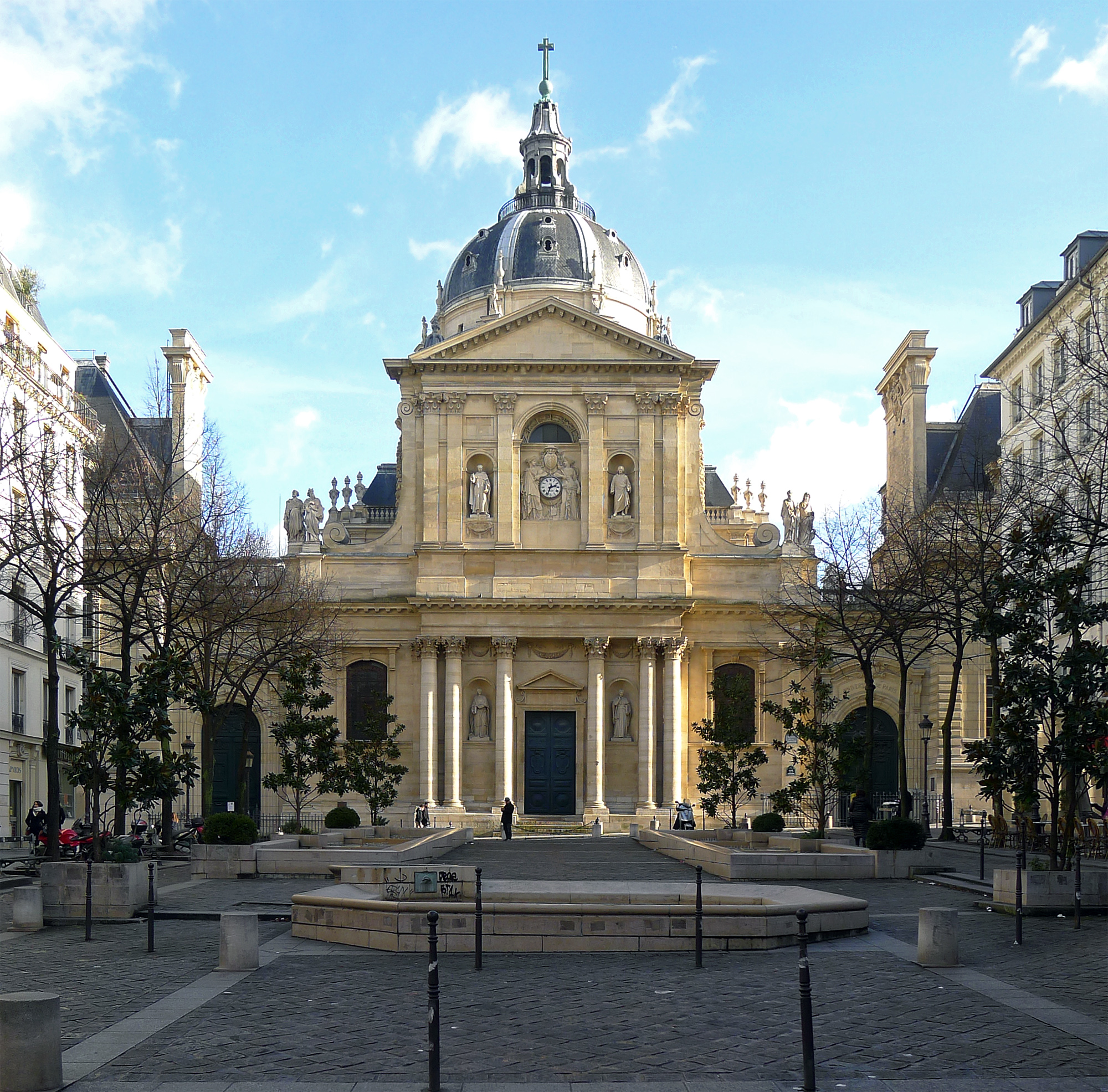|
Joseph-Christian-Ernest Bourret
Joseph Christian Ernest Bourret (9 December 1827 in the hamlet of Labro, near Saint-Étienne-de-Lugdarès, Ardèche – 10 July 1896 in Rodez) was a French churchman, bishop and cardinal. Life Joseph-Christian-Ernest Bourret was ordained into the Oratory of Saint Philip Neri as priest in 1851 in Paris. He was ordained bishop of Rodez in 1871, and made a cardinal by Pope Leo XIII Pope Leo XIII ( it, Leone XIII; born Vincenzo Gioacchino Raffaele Luigi Pecci; 2 March 1810 – 20 July 1903) was the head of the Catholic Church from 20 February 1878 to his death in July 1903. Living until the age of 93, he was the second-old ... in 1893. Sources *''This page is a translation of :fr:Joseph-Christian-Ernest Bourret.''Catholic Hierarchy.org 1827 births 1896 deaths People from Ardèche Bishops of Rodez 19th-century French cardinals Cardinals created by Pope Leo XIII {{RC-cardinal-stub ... [...More Info...] [...Related Items...] OR: [Wikipedia] [Google] [Baidu] |
His Eminence
His Eminence (abbreviation H.Em. or H.E. or HE) is a style (manner of address), style of reference for high nobility, still in use in various religious contexts. Catholicism The style remains in use as the official style or standard form of address in reference to a cardinal (Catholicism), cardinal of the Catholic Church, reflecting his status as a Prince of the Church. A longer, and more formal, title is "His (or Your when addressing the cardinal directly) Most Reverend Eminence". Patriarchs of Eastern Catholic Churches who are also cardinals may be addressed as "His Eminence" or by the style particular to Catholic patriarchs, His Beatitude. When the Grand master (order), Grand Master of the Sovereign Military Order of Malta, the head of state of their sovereign territorial state comprising the island of Malta until 1797, who had already been made a Reichsfürst (i.e., prince of the Holy Roman Empire) in 1607, became (in terms of honorary order of precedence, not in the act ... [...More Info...] [...Related Items...] OR: [Wikipedia] [Google] [Baidu] |
Saint-Étienne-de-Lugdarès
Saint-Étienne-de-Lugdarès (; Auvergnat: ''Sant Estève de Ludarés'') is a commune in the Ardèche department in southern France France (), officially the French Republic ( ), is a country primarily located in Western Europe. It also comprises of overseas regions and territories in the Americas and the Atlantic, Pacific and Indian Oceans. Its metropolitan area .... Population See also * Communes of the Ardèche department References External linksOfficial Web site Communes of Ardèche Ardèche communes articles needing translation from French Wikipedia {{Ardèche-geo-stub ... [...More Info...] [...Related Items...] OR: [Wikipedia] [Google] [Baidu] |
Bishops Of Rodez
The Diocese of Rodez (–Vabres) ( la, Dioecesis Ruthenensis (–Vabrensis); French language, French: ''Diocèse de Rodez (–Vabres)'') is a Latin Church ecclesiastical territory or diocese of the Catholic Church in France. The episcopal see is in Rodez. The diocese corresponds exactly to the Department of Aveyron (formerly Rouergue). Originally erected in the 5th century, the Diocese of Rodez lost territory when the Diocese of Vabres was created by Pope John XXII on 11 July 1317. In 1801, the diocese was suppressed and its territory split and merged with the Diocese of Cahors and the Roman Catholic Diocese of Saint-Flour, Diocese of Saint-Flour. In 1817, the diocese was restored and given jurisdiction over the ancient Diocese of Rodez, with the exception of (1) the deanery of Saint Antonin, which was incorporated with the Diocese of Montauban; (2) the ancient Diocese of Vabres; and (3) a few scattered communes of the Diocese of Cahors. It was a suffragan diocese of the Archdi ... [...More Info...] [...Related Items...] OR: [Wikipedia] [Google] [Baidu] |
People From Ardèche
A person ( : people) is a being that has certain capacities or attributes such as reason, morality, consciousness or self-consciousness, and being a part of a culturally established form of social relations such as kinship, ownership of property, or legal responsibility. The defining features of personhood and, consequently, what makes a person count as a person, differ widely among cultures and contexts. In addition to the question of personhood, of what makes a being count as a person to begin with, there are further questions about personal identity and self: both about what makes any particular person that particular person instead of another, and about what makes a person at one time the same person as they were or will be at another time despite any intervening changes. The plural form "people" is often used to refer to an entire nation or ethnic group (as in "a people"), and this was the original meaning of the word; it subsequently acquired its use as a plural form of ... [...More Info...] [...Related Items...] OR: [Wikipedia] [Google] [Baidu] |
1896 Deaths
Events January–March * January 2 – The Jameson Raid comes to an end, as Jameson surrenders to the Boers. * January 4 – Utah is admitted as the 45th U.S. state. * January 5 – An Austrian newspaper reports that Wilhelm Röntgen has discovered a type of radiation (later known as X-rays). * January 6 – Cecil Rhodes is forced to resign as Prime Minister of the Cape of Good Hope, for his involvement in the Jameson Raid. * January 7 – American culinary expert Fannie Farmer publishes her first cookbook. * January 12 – H. L. Smith takes the first X-ray photograph. * January 17 – Fourth Anglo-Ashanti War: British redcoats enter the Ashanti capital, Kumasi, and Asantehene Agyeman Prempeh I is deposed. * January 18 – The X-ray machine is exhibited for the first time. * January 28 – Walter Arnold, of East Peckham, Kent, England, is fined 1 shilling for speeding at (exceeding the contemporary speed limit of , the first sp ... [...More Info...] [...Related Items...] OR: [Wikipedia] [Google] [Baidu] |
1827 Births
Eighteen or 18 may refer to: * 18 (number), the natural number following 17 and preceding 19 * one of the years 18 BC, AD 18, 1918, 2018 Film, television and entertainment * ''18'' (film), a 1993 Taiwanese experimental film based on the short story ''God's Dice'' * ''Eighteen'' (film), a 2005 Canadian dramatic feature film * 18 (British Board of Film Classification), a film rating in the United Kingdom, also used in Ireland by the Irish Film Classification Office * 18 (''Dragon Ball''), a character in the ''Dragon Ball'' franchise * "Eighteen", a 2006 episode of the animated television series ''12 oz. Mouse'' Music Albums * ''18'' (Moby album), 2002 * ''18'' (Nana Kitade album), 2005 * '' 18...'', 2009 debut album by G.E.M. Songs * "18" (5 Seconds of Summer song), from their 2014 eponymous debut album * "18" (One Direction song), from their 2014 studio album ''Four'' * "18", by Anarbor from their 2013 studio album '' Burnout'' * "I'm Eighteen", by Alice Cooper common ... [...More Info...] [...Related Items...] OR: [Wikipedia] [Google] [Baidu] |
Bishop Of Rodez
The Diocese of Rodez (–Vabres) ( la, Dioecesis Ruthenensis (–Vabrensis); French: ''Diocèse de Rodez (–Vabres)'') is a Latin Church ecclesiastical territory or diocese of the Catholic Church in France. The episcopal see is in Rodez. The diocese corresponds exactly to the Department of Aveyron (formerly Rouergue). Originally erected in the 5th century, the Diocese of Rodez lost territory when the Diocese of Vabres was created by Pope John XXII on 11 July 1317. In 1801, the diocese was suppressed and its territory split and merged with the Diocese of Cahors and the Diocese of Saint-Flour. In 1817, the diocese was restored and given jurisdiction over the ancient Diocese of Rodez, with the exception of (1) the deanery of Saint Antonin, which was incorporated with the Diocese of Montauban; (2) the ancient Diocese of Vabres; and (3) a few scattered communes of the Diocese of Cahors. It was a suffragan diocese of the Archdiocese of Bourges until 1676, then of the Archdi ... [...More Info...] [...Related Items...] OR: [Wikipedia] [Google] [Baidu] |
Paris
Paris () is the capital and most populous city of France, with an estimated population of 2,165,423 residents in 2019 in an area of more than 105 km² (41 sq mi), making it the 30th most densely populated city in the world in 2020. Since the 17th century, Paris has been one of the world's major centres of finance, diplomacy, commerce, fashion, gastronomy, and science. For its leading role in the arts and sciences, as well as its very early system of street lighting, in the 19th century it became known as "the City of Light". Like London, prior to the Second World War, it was also sometimes called the capital of the world. The City of Paris is the centre of the Île-de-France region, or Paris Region, with an estimated population of 12,262,544 in 2019, or about 19% of the population of France, making the region France's primate city. The Paris Region had a GDP of €739 billion ($743 billion) in 2019, which is the highest in Europe. According to the Economist Intelli ... [...More Info...] [...Related Items...] OR: [Wikipedia] [Google] [Baidu] |
Oratory Of Saint Philip Neri
The Confederation of Oratories of Saint Philip Neri ( la, Confoederatio Oratorii Sancti Philippi Nerii) abbreviated CO and commonly known as the Oratorians is a Catholic society of apostolic life of Pontifical Right for men (priests and lay-brothers) who live together in a community bound together by no formal vows but only with the bond of charity. Founded in Rome in 1575 by Philip Neri, today it has spread around the world, with over 70 Oratories and some 500 priests. The post-nominal initials commonly used to identify members of the society are "CO" (''Congregatio Oratorii''). The abbreviation "Cong. Orat." is also used. Unlike a religious institute (the members of which take vows and are answerable to a central authority) or a monastery (the monks of which are likewise bound by vows in a community that may itself be autonomous and answerable directly to the Pope), the Oratorians are made up of members who commit themselves to membership in a particular, independent, s ... [...More Info...] [...Related Items...] OR: [Wikipedia] [Google] [Baidu] |
Ardèche
Ardèche (; oc, Ardecha; frp, Ardecha) is a department in the Auvergne-Rhône-Alpes region of Southeastern France. It is named after the river Ardèche and had a population of 328,278 as of 2019.Populations légales 2019: 07 Ardèche INSEE Its is in Privas, but its largest city is Annonay. History Prehistory and ancient history [...More Info...] [...Related Items...] OR: [Wikipedia] [Google] [Baidu] |
Sorbonne University
Sorbonne University (french: Sorbonne Université; la Sorbonne: 'the Sorbonne') is a public research university located in Paris, France. The institution's legacy reaches back to 1257 when Sorbonne College was established by Robert de Sorbon as one of the first universities in Europe. Sorbonne University is considered one of the most prestigious universities in Europe and the world. It has a world-class reputation in academia and industry; as of 2021, its alumni and professors have won 33 Nobel Prizes, six Fields Medals, and one Turing Award. In the 2021 edition of the '' Academic Ranking of World Universities'', Sorbonne University ranked 35th in the world, placing it as the 4th best university in continental Europe, 3rd in Mathematics and Oceanography. In the 2023 edition of ''QS World University Rankings'', the Sorbonne ranked 60th in the world, placing it 8th in continental Europe, 14th in Natural Sciences and Mathematics, and 7th in Classics and Ancient History. K ... [...More Info...] [...Related Items...] OR: [Wikipedia] [Google] [Baidu] |

_1938.jpg)
.jpg)

_-_Sacristy_-_Saint_Philip_Neri.jpg)

